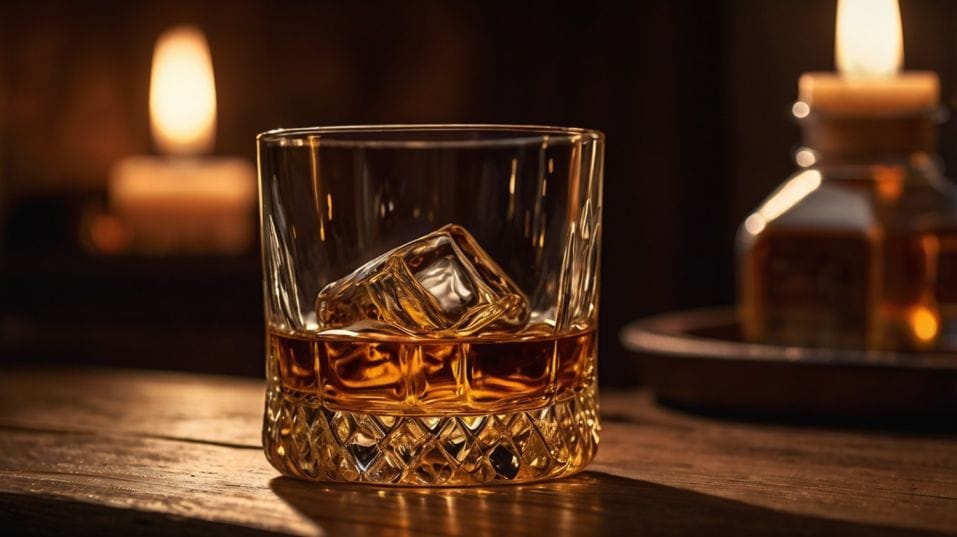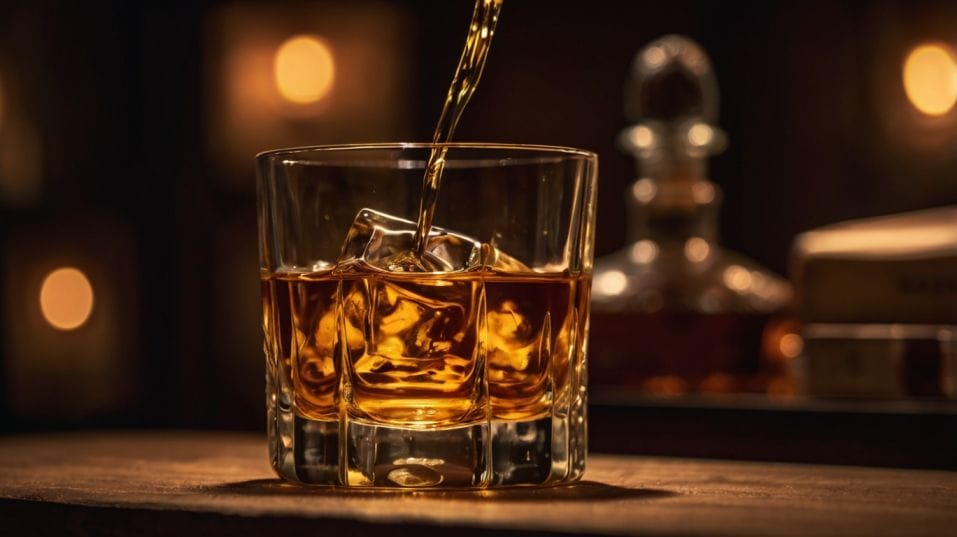Does Water Change Flavor? A Look at Dilution
Learn how adding water unlocks whiskey’s hidden flavors. Perfect for new drinkers ready to taste deeper, smarter, and with confidence.

Ever wondered why whiskey lovers fuss over a single drop of water? It’s not just ritual—it’s chemistry. Water doesn’t dilute flavor. It reveals it.
For new drinkers and curious collectors alike, learning how dilution works unlocks a richer, more vivid tasting experience.
Whether you're swirling your first dram or decoding a high-proof bottle, understanding how water changes whiskey is a game-changer. Let’s break it down.
What Dilution Really Does
At its core, whiskey is a mix of alcohol, water, and hundreds of flavor compounds—esters, aldehydes, acids, phenols, and more. These compounds are what give whiskey its nose, taste, texture, and finish.
But they don’t all behave the same way. Some dissolve better in alcohol. Some prefer water. Others only become noticeable when the balance between the two shifts. That’s where dilution comes in.
When you add water, even a few drops, you’re changing how those compounds interact. You’re not just “watering it down”—you’re altering the molecular landscape.
This shift allows new aromas to emerge, changes the way the whiskey hits your palate, and can even stretch out or sharpen the finish.
Dilution is less about volume and more about access. It gives you a clearer view of what the whiskey really is—not just how it hits straight from the bottle.

The Burn Blocks the Flavor
High-proof whiskey can be seductive. But let’s be honest—if your tongue is numb and your nose is flinching, you’re not tasting much. Alcohol is volatile. At high concentrations, it overwhelms your senses. It masks subtle notes. It dulls nuance.
Water takes that edge off. Not by making it weaker, but by making it more readable. Think of it like dimming a car’s high beams when fog rolls in—you’re not reducing light, you’re reducing glare so you can see more clearly.
Even whiskeys bottled at a “standard” 40–46% ABV can benefit from careful dilution. But it’s especially useful with cask-strength pours, where the alcohol can spike past 55% and blast your palate into shutdown mode.
A small reduction in proof—a few percentage points—can be the difference between a hazy wall of alcohol and a detailed, expressive sip.
How to Add Water Like You Mean It
Here’s the move: pour a clean dram. No ice, no distractions. Use a dropper, a straw, or even a spoon. Add a single drop of clean, room-temperature water. Swirl gently. Don’t rush. Bring the glass to your nose. Take your time.
What do you smell now that wasn’t there before? More fruit? More wood? Did the ethanol pull back enough for new layers to come forward?
Taste. Has the texture changed? Are certain flavors bolder—or subtler? Is the finish longer, sharper, or softer? Then add another drop. Repeat.
The goal isn’t to “stretch” your whiskey or follow some rigid ratio. It’s to tune the pour until you’re seeing its full spectrum.
You’re customizing the experience to you, based on your palate and the whiskey’s structure. No one can hand you that answer. You earn it sip by sip.
Water Quality Matters
Don’t spend $150 on a single malt just to kill it with tap water. The chlorine, minerals, and residual compounds in standard tap water can muffle flavors or skew the balance entirely.
Carbonated or mineral waters can be even worse—they come loaded with their own taste and texture, which crash into the whiskey’s profile like a wrecking ball.
Stick to soft, neutral water. Filtered is good. Distilled works too, especially in small amounts. Ideally, you want water that’s close in character to what the distillery used when they brought the whiskey down to bottling strength.
Room temperature is key. Cold water deadens aroma. You’re not trying to chill a summer cocktail. You’re trying to open up a complex spirit.
Not All Whiskeys React the Same Way
Some whiskeys bloom dramatically with water. Others barely shift. A few might even fall apart. That tells you something valuable.
What Changes—and What Doesn’t
Peated Scotch often transforms—going from aggressive smoke to rich earth, roasted barley, even sweet vanilla depending on how it’s cut. High-rye bourbons might mellow their spice and show more fruit.
Irish whiskeys, typically softer, may become almost creamy with dilution. And then there are certain pours—especially younger whiskeys or over-oaked ones—that collapse the moment you drop the proof.
None of that is random. Whiskeys that hold their structure through dilution tend to be well-made, well-aged, and balanced.
The ones that don’t? That’s a red flag—especially if you’re thinking about buying multiples or investing in a bottle long-term. If a whiskey only works at full blast, it may be hiding behind its own intensity.
Dilution as a Tasting Tool
Adding water isn’t just about enhancing pleasure. It sharpens perception. As you learn how each whiskey changes with dilution, you develop something far more valuable than a collection: you build palate memory.
That’s what gives seasoned tasters their edge. They don’t just taste what’s in the glass—they remember how it changed, how it evolved, and how it compared to others in the same style or age range.
That kind of knowledge doesn’t come from reading labels. It comes from controlled, repeated, focused tasting.
And that’s why even if you don’t like your whiskey diluted, you should still try it. You’re not just sipping—you’re studying.
When Not to Add Water
Sometimes you’ll find a whiskey that just clicks straight from the bottle. Balanced, expressive, smooth enough to savor without interference. Great—leave it alone. Dilution isn’t mandatory. It’s a tool, not a rule.
But don’t confuse personal preference with default behavior. If you never try diluting, you’re missing out on half the story.
There’s no shame in liking your whiskey neat. Just make sure it’s because you explored the alternative and came back with intention—not because you stuck to habit.
Final Thoughts
Water changes flavor—but only if you pay attention. When used with purpose, dilution reveals what whiskey really has to say. It strips away heat, opens the nose, shifts texture, and teaches you to taste in full color.
Forget ratios. Forget rules. Add water when it helps you notice more, enjoy more, understand more.
Tonight, pour something familiar. Add a drop. Take your time. Taste the shift. Then do it again with a new bottle, a different style, a bolder proof.
This is how you stop drinking whiskey like a spectator and start tasting like a collector. Build your palate. Trust your senses. Make your next pour intentional.




